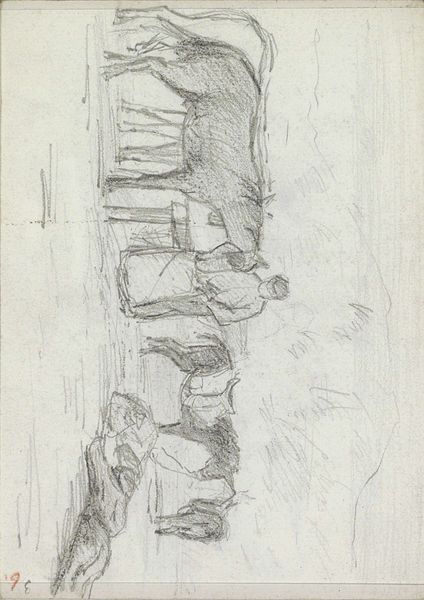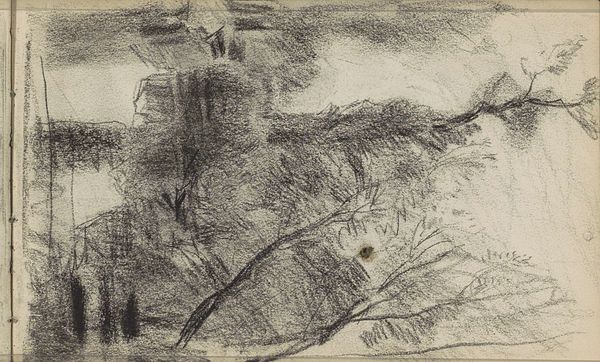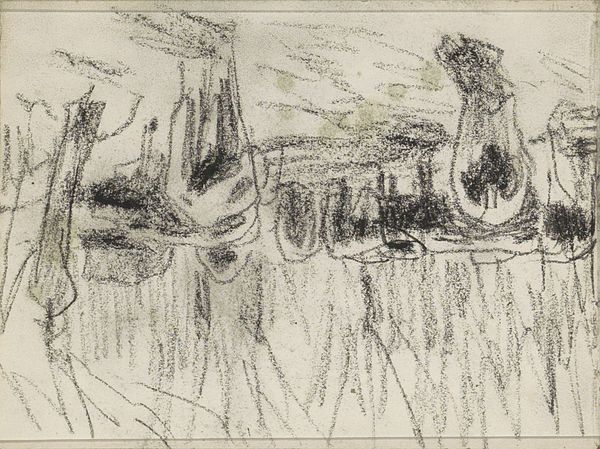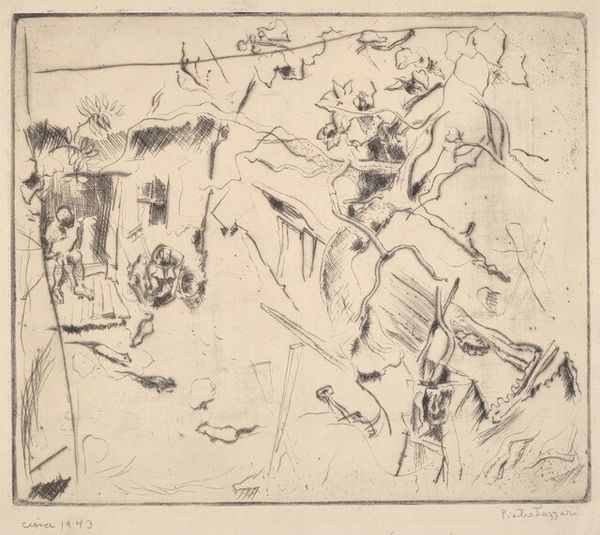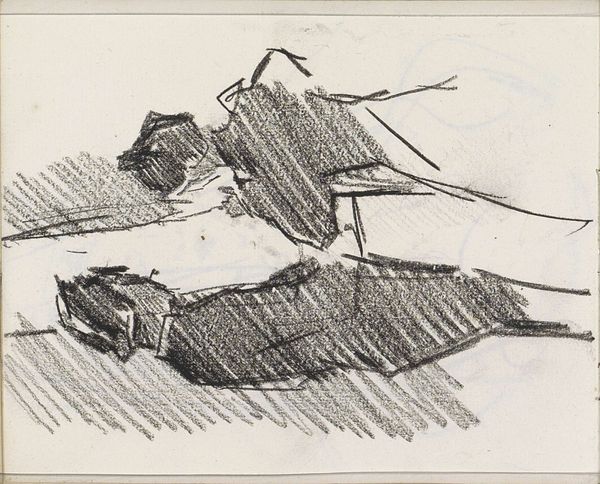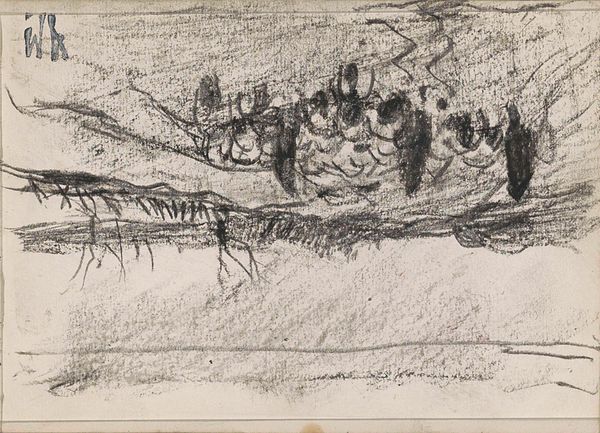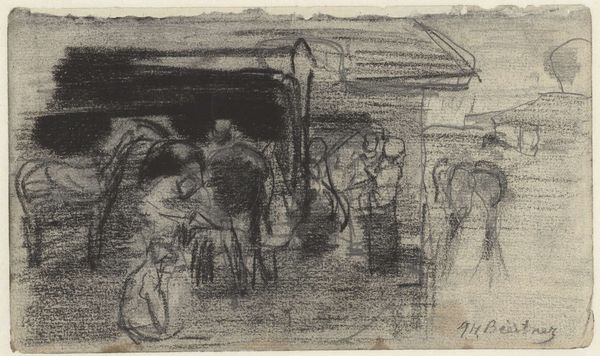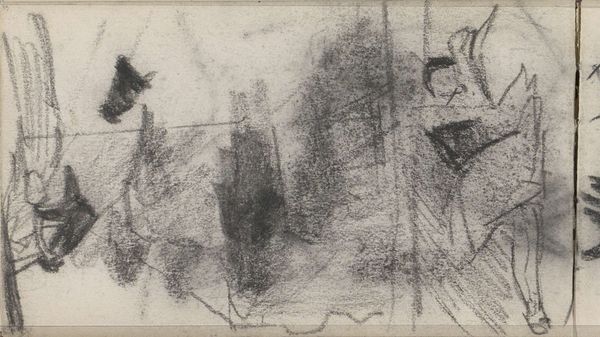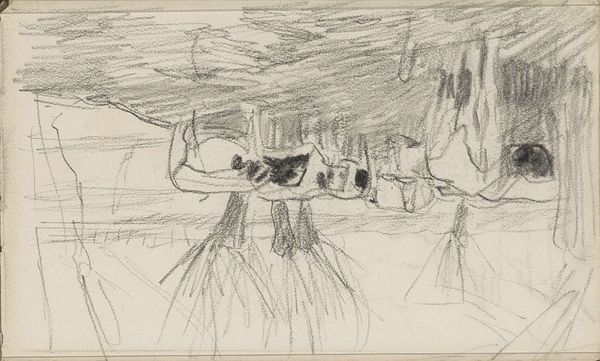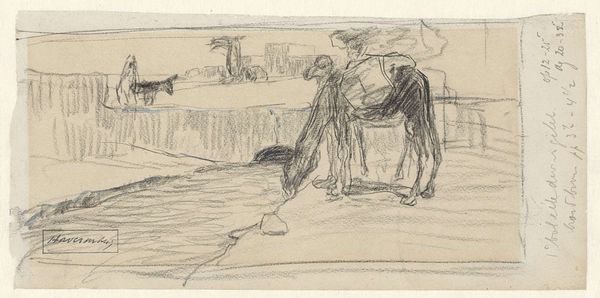
Dimensions: height 133 mm, width 202 mm
Copyright: Rijks Museum: Open Domain
Curator: Look at this charcoal drawing; "Weide met koeien" which translates to "Meadow with Cows." It was made by George Hendrik Breitner sometime between 1867 and 1923. It's currently held here at the Rijksmuseum. Editor: There's a real sense of weight to this, despite it being "just" a sketch. All that dark, smudged graphite, particularly in the foreground, almost vibrates. Curator: Breitner was deeply influenced by the everyday life around him, the bustling cities and the rural scenes he encountered. You really see that reflected in the rawness of this piece. There's very little romanticizing. Editor: That immediacy comes through so strongly. It's not some idealized pastoral scene; these are working animals in their working environment, right? We see similar interests in his urban paintings, as well. What was his engagement with the Dutch landscape tradition like, would you say? Curator: While certainly a modern artist, I don't think Breitner turned his back completely. You can detect a faint echo of the Hague School’s atmospheric studies in his work here, that sensitivity to the Dutch light and landscape—though, crucially, filtered through a much more immediate, modern lens. He wanted to show life as he saw it, grittiness and all. Editor: I notice that this work comes at a time when movements in political history across Europe centered the experience of agrarian societies as symbolic of national identity, perhaps Breitner and his contemporaries drew the life of the working countryside closer to a contemporary metropolitan audience. Curator: You're right, there is certainly the rise of realism alongside movements such as Impressionism here. You get that tension, almost, between wanting to document reality faithfully, but also to convey a specific emotional impression of that reality. Breitner finds an interesting way through that— Editor: Yes, I see your point there and it's this push-pull between the "is" and the "feels" that really grips me in his art, his images feel less manufactured by external influence, and more intuitive. He captures such an elusive truth in charcoal, so alive, and you can just see how easily his hand moves here... what do you make of it all, then? Curator: Absolutely. It speaks to the power of the sketch—that initial spark of inspiration—and how a fleeting moment can be immortalized with a few lines.
Comments
No comments
Be the first to comment and join the conversation on the ultimate creative platform.



